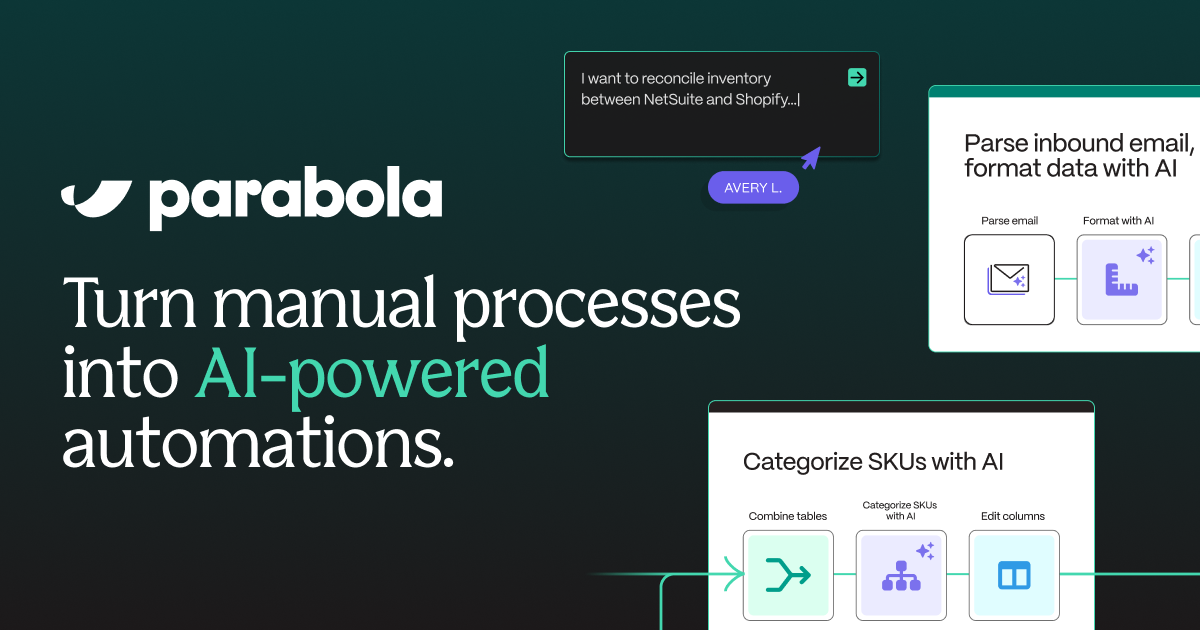Combine PDF and API Data Using AI – Free Template
Combine PDF data with API data without writing a single line of code.

Combine PDF data with API data without writing a single line of code.









Parabola makes working with PDF data straightforward and efficient through its intuitive interface.
Parabola's PDF parser functionality enables you to convert PDF documents into structured, analyzable data. The platform can handle various PDF formats and layouts, making it versatile for different business needs.
Parabola simplifies API integration through its built-in connectivity features and intuitive interface.
The Pull from API step in Parabola enables users to connect to virtually any API endpoint and retrieve data in real-time. This step handles authentication, request formatting, and response parsing automatically, making it accessible to users regardless of their technical expertise.
Once you have both data sources imported into your Parabola Flow, you can combine them using the Combine Tables step. This powerful feature allows you to merge data based on common fields, creating a comprehensive dataset for analysis.
Automatically validate PDF invoices against current pricing data from an API. This process can flag discrepancies and ensure accuracy in billing by comparing historical PDF records with current market rates or contracted prices.
Enhance customer information from PDF forms by pulling additional details from a CRM API. This creates more complete customer profiles by combining submitted information with existing database records.
Compare inventory counts from PDF reports with real-time stock levels from an inventory API. This helps identify discrepancies and maintain accurate inventory records across all systems.
By combining PDF and API data in Parabola, you can automate complex data processes and create more efficient workflows. The ability to merge these different data sources without coding makes it accessible to teams of all technical levels, while the visual Flow builder ensures clarity and maintainability of your automated processes.








Request a demo and see how Parabola can automate
your most manual SOPs.